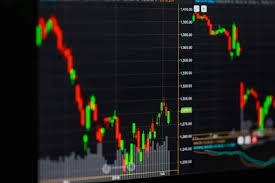
Effective Forex Day Trading Strategies for Success
In the world of financial trading, forex day trading stands out as one of the most exhilarating and profitable forms of trading. With the potential to make quick profits by leveraging small price movements, day traders frequently operate in the forex (foreign exchange) market. This article aims to explore various forex day trading strategies that can enhance your trading effectiveness and help you maximize your profits. For those interested in expanding their financial horizons, consider visiting forex day trading strategy Crypto Trading Asia for additional resources.
Understanding Forex Day Trading
Forex day trading involves buying and selling currency pairs within the same trading day. Unlike long-term trading strategies, day traders aim to capitalize on intraday price movements and close all positions by the end of the trading day. This means that day traders do not leave trades open overnight, which helps them avoid risks associated with overnight price changes.
Benefits of Forex Day Trading
- High Liquidity: The forex market is the most liquid market in the world, with trillions of dollars traded daily. This high liquidity allows day traders to enter and exit positions easily.
- Flexibility: Day trading offers flexibility in terms of trading hours. The forex market is open 24 hours a day, five days a week, allowing traders to choose their trading hours according to their schedule.
- Potential for High Returns: Due to leveraging, day traders can achieve substantial returns over short periods. Thorough analysis and strategy can amplify profits significantly.
- No Overnight Risk: Since day traders close all positions before the market closes, they avoid risks that can arise from holding trades overnight.
Essential Forex Day Trading Strategies
Several well-established strategies can assist traders in navigating the forex market effectively. Here are some of the most prominent forex day trading strategies:

1. Scalping
Scalping is a strategy where traders aim to profit from small price changes by executing numerous trades throughout the day. This requires a high level of discipline and quick decision-making. Scalpers typically hold positions for just a few seconds to a few minutes and rely on high leverage to amplify their profits.
2. Momentum Trading
Momentum trading involves following existing trends in the forex market. Traders identify currency pairs that are trending strongly in one direction and make trades that align with the momentum. This strategy requires traders to be informed about market news and employ appropriate technical indicators to spot trends.
3. Range Trading
Range trading is based on the premise that prices often fluctuate within a certain range. Traders identify levels of support and resistance and make trades based on the likelihood of prices bouncing off these levels. This approach can lead to profitable trades if timed correctly.
4. Breakout Trading
Breakout trading focuses on identifying key levels of support and resistance and acting when the price breaks through these levels. Traders anticipate that the price will continue to move in the direction of the breakout, providing opportunities for profit.

5. News Trading
News trading involves taking advantage of market volatility around major news releases. By anticipating how economic news, reports, and events will impact currencies, traders can position themselves to profit from the resulting price movements. However, this strategy requires a deep understanding of fundamental analysis.
Tools and Indicators for Day Trading
To enhance the effectiveness of any forex day trading strategy, traders should utilize technical analysis tools and indicators. Some of the commonly used tools include:
- Moving Averages: Useful for identifying the trend direction and potential support and resistance levels.
- Relative Strength Index (RSI): Helps traders determine whether a currency pair is overbought or oversold.
- Bollinger Bands: Provides insight into market volatility and potential price retracements.
- MACD (Moving Average Convergence Divergence): A momentum indicator that can signal potential buy or sell opportunities.
Risk Management in Forex Day Trading
Effective risk management is crucial for day traders to minimize losses and protect their capital. Here are some key principles:
- Set a Stop-Loss: A stop-loss order automatically closes a position at a predetermined price, which helps limit losses.
- Define Your Risk per Trade: Traders should determine the percentage of their capital that they are willing to risk on each trade—generally, 1% to 2% is considered appropriate.
- Use Proper Position Sizing: Calculating the appropriate position size based on account balance and risk tolerance ensures that traders do not overexpose themselves.
- Keep Emotions in Check: Following a disciplined approach and avoiding impulsive trades can help prevent excessive losses.
Conclusion
Forex day trading can be a lucrative venture for those willing to invest time and effort into developing their strategies. By understanding various strategies, utilizing essential tools, and implementing effective risk management, traders can enhance their chances of success in the forex market. As you embark on your day trading journey, remember that continuous learning and adaptation to the ever-changing market conditions are key to long-term profitability.


Deixa una Resposta